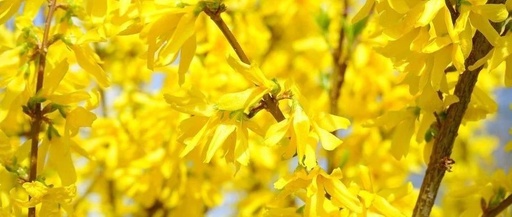
Dietary Classroom – Understanding Herbs
Hi~ Welcome to the newly opened dietary classroom – “Understanding Herbs”. The dietary expert will regularly introduce various Chinese medicinal ingredients, helping you understand the characteristics and temperaments of these herbs. Let’s become little experts in Chinese medicine together!

The late famous Japanese doctor, Xiangyue Niushan, said: “To treat vomiting, add Lian Qiao (Forsythia) to the symptomatic formula, which is a family secret.”
Let’s give it a try!
Do you know the flower language of Lian Qiao (Forsythia)?
Click the blank area below to view hidden content ▼
Lian Qiao is the city flower of Seoul, South Korea, and its flower language is ‘anticipation’.
This flower possesses a magical power; it is said that if you place Lian Qiao flowers under your pillow while sleeping, you will dream of the appearance of your future partner. This is not an evil sorcery, but a beautiful magic.
Basic Knowledge
Aliases
Yi Qiao (Forsythia), Han Lian Zi (Dried Forsythia Fruit)
Taste and Properties
Bitter, Cool
Meridians Entered
Heart, Liver, Gallbladder
Functions
Mainly used to clear heat, detoxify, disperse nodules, and reduce swelling. It treats warm heat, carbuncles, rashes, abscesses, and urinary blockages.
Reducing Swelling and Dispersing Nodules
Lian Qiao has the effect of reducing swelling and dispersing nodules. The Ben Cao Ri Zhi states, “It opens the small intestine and drains pus. It treats sores and boils, alleviates pain, and regulates menstruation.” Therefore, Lian Qiao can be consumed to relieve conditions such as abscesses, swellings, and sores.
Clearing Heat and Detoxifying
Lian Qiao is bitter and cold, primarily entering the heart meridian, capable of clearing heart fire, detoxifying sores, and reducing swelling and dispersing nodules. It is effective for external wind-heat or the initial stages of warm diseases, presenting symptoms such as fever, slight aversion to cold, cough, and sore throat.
Dispersing Wind-Heat
Lian Qiao is bitter and cold, which can disperse wind-heat externally and clear heat and detoxify internally. It is commonly used to treat external wind-heat or the initial stages of warm diseases, with symptoms of high fever, thirst, and sore throat.
Anti-Inflammatory
Lian Qiao has anti-inflammatory and antibacterial properties, useful for treating heart fire, mouth sores, halitosis, or heart fire descending to the small intestine causing heat dysuria and painful urination.
Diuretic
The fruit skin of Lian Qiao contains oleanolic acid, which, when combined with Bai Mao Gen (Imperata), Mu Tong (Akebia), Chuan Lian (Rhizoma Coptidis), and Sheng Di Huang (Rehmannia), can clear the heart and reduce fire, promoting urination. It is particularly effective for constipation and painful urination.
Antimicrobial
Lian Qiao has antimicrobial effects, inhibiting pathogens such as typhoid bacillus, paratyphoid bacillus, E. coli, diphtheria bacillus, cholera vibrio, and streptococcus. It also has a good inhibitory effect on dysentery bacillus and Staphylococcus aureus. Therefore, it is commonly used to treat enteritis, dysentery, and psoriasis.
Suitable Population
Those with cough, sore throat, or heat dysuria.
Contraindications
Those with spleen and stomach deficiency, qi deficiency with fever, or who have abscesses that have already ruptured and pus that is thin and pale should avoid it.
According to the Ben Cao Jing Shu: Do not take if abscesses have already ruptured, do not take if there is great heat due to deficiency, and do not take if the spleen and stomach are weak and prone to diarrhea.
According to the Ben Cao Tong Xuan: Long-term use may lead to cold accumulation issues.
Dietary Recipe
Lian Qiao Pea Paste
Ingredients
Lian Qiao flowers 5g, peas 100g, water
Method
1. Soak the freshly picked Lian Qiao flowers in light salt water for 1 hour.
2. Boil the fresh peas in water until cooked, then add the Lian Qiao flowers and turn off the heat.
3. Pour the mixture, including the broth, into a blender and blend until smooth. You can add sugar or salt according to your preference, then serve.



